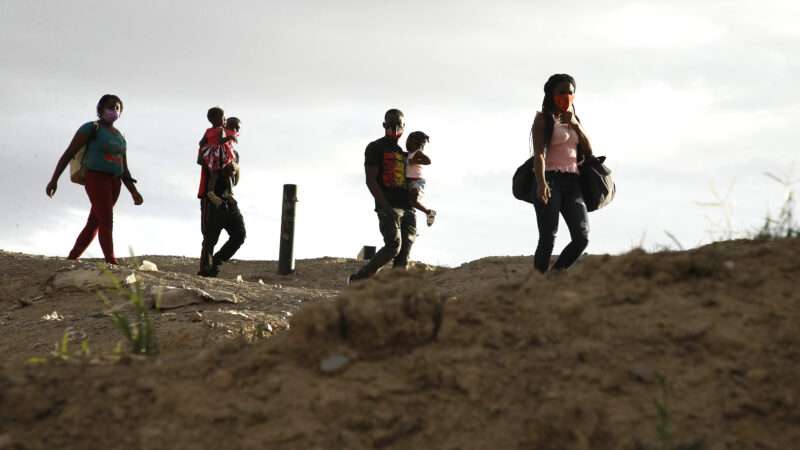
A growing number of people from far-flung nations are trying to cross into the U.S. from Mexico. That trend is challenging President Joe Biden’s attempts at stemming migration at the border.
Over the past few decades, border crossers have shifted from mostly Mexican nationals to mostly citizens of Central America’s Northern Triangle region of El Salvador, Guatemala, and Honduras. In 2000, Mexican nationals comprised 98 percent of migration volume at the border, while Central Americans made up 1 percent. By May 2019, Northern Triangle nationals made up 78 percent of border crossers, and Mexicans 13 percent.
That breakdown seems to be shifting once again, judging by the Department of Homeland Security’s (DHS) Southwest border encounter data for April 2021. According to DHS, Customs and Border Protection (CBP) encountered 33,150 citizens of nations outside El Salvador, Guatemala, Honduras, and Mexico at the border in April 2021. In January, that number was just 9,416.
With 173,460 CBP encounters in April, migrants from nations outside Mexico and the Northern Triangle accounted for nearly 20 percent of border crossers. Most are single adults or members of family units.
Miriam Jordan writes in The New York Times that these are largely “pandemic refugees” escaping COVID-addled economies. While agents in the past few months have encountered people from over 160 countries, numbers of migrating Ecuadorians, Brazilians, and Venezuelans have skyrocketed.
Beyond the Americas, Jordan reports that migrants are going to great lengths to reach the border. Those from India have traveled to major hubs “like Mumbai, where they boarded planes to Dubai and then connected through Moscow, Paris, and Madrid, finally flying to Mexico City. From there, they embarked on the two-day bus ride to reach the Mexico-U.S. border.” Over 2,000 Romanians have already made the journey in fiscal year 2021, compared to 266 in 2020. According to Reuters, these migrants often fly from Paris to Mexico City and are then smuggled by bus to the Rio Grande River, which they cross by raft into Texas.
Biden campaigned on a promise to help solve “the humanitarian crisis at our border.” His proposed solution includes a four-year, $4 billion plan to invest in security and development in the Northern Triangle nations. That’s in addition to the $310 million in aid he sent to those countries in April. All told, these sums are meant “to encourage would-be migrants to stay home” by alleviating the issues that might compel people to come to the U.S., writes Tana Ganeva for Reason.
That approach yields mixed results. In a 2019 policy paper, Michael A. Clemens of the Center for Global Development, and Hannah M. Postel, a Princeton University Ph.D. student, reported that “the evidence suggests that the capacity of development assistance to deter migration is small at best.” Further, they find that successful development in nearly all formerly poor countries has led to increased emigration. The Obama administration failed to effectively address root causes of Central American emigration with its aid-driven Alliance for Prosperity Plan, and by the end of the president’s tenure, he had deported around 3 million people—many of whom were from the Northern Triangle.
Those findings cast doubt on Biden’s plan to send aid to nations to keep would-be migrants at home—an approach that would be costly and questionably effective, now that citizens of over 160 countries are arriving at the U.S.-Mexico border.
In the long run, making immigration pathways easier to navigate could make streams of migration more predictable, which would help stem sudden influxes like the one currently challenging Biden. And given the changing face of immigration at the Southwest border, spot treatment via foreign aid cannot possibly be a solution. The Trump-era “zero tolerance” policy at the border is not the answer, but neither is Biden’s deterrence through development scheme.
from Latest – Reason.com https://ift.tt/3igbBL4
via IFTTT